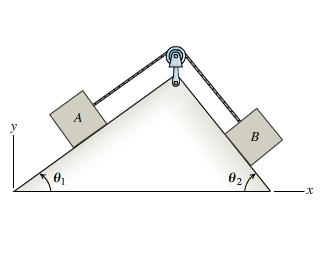To apply the principle of work and energy to a system of particles. The principle of work and energy can be extended from one particle to include a system of particles as follows:
∑T1+∑U1−2=∑T2
where ∑T1 is the system's initial kinetic energy, ∑U1−2 is the sum of the work done by all external and internal forces acting on the system's particles, and ∑T2 is the system's final kinetic energy. When the particles either are undergoing only translational motion or are connected by inextensible cables, the internal forces of the particles negate each other; only the external forces are required in the principle of work and energy.
When frictional forces are present, the work done by the frictional force is UF=μkNs, where μk is the coefficient of kinetic friction, N is the normal force, and s is the body's displacement. In this equation, the work done by friction represents both the external work of friction and the internal work that is converted into various forms of internal energy, such as heat.
As shown, two blocks, resting on different inclines, are connected by an inelastic cable that passes over a frictionless pulley(Figure 2). Block A weighs 12.0 lb and block B weighs 41.0 lb . The incline angles are θ1 = 30.0 degrees and θ2 = 55.0 degrees , and the coefficient of kinetic friction between the blocks and the inclines is μk = 0.100. When the blocks are released from rest, block B slides down its incline. What is the magnitude of block A's velocity, vA, after block B has slid 6.90 ft ?

Trending now
This is a popular solution!
Step by step
Solved in 6 steps with 9 images









